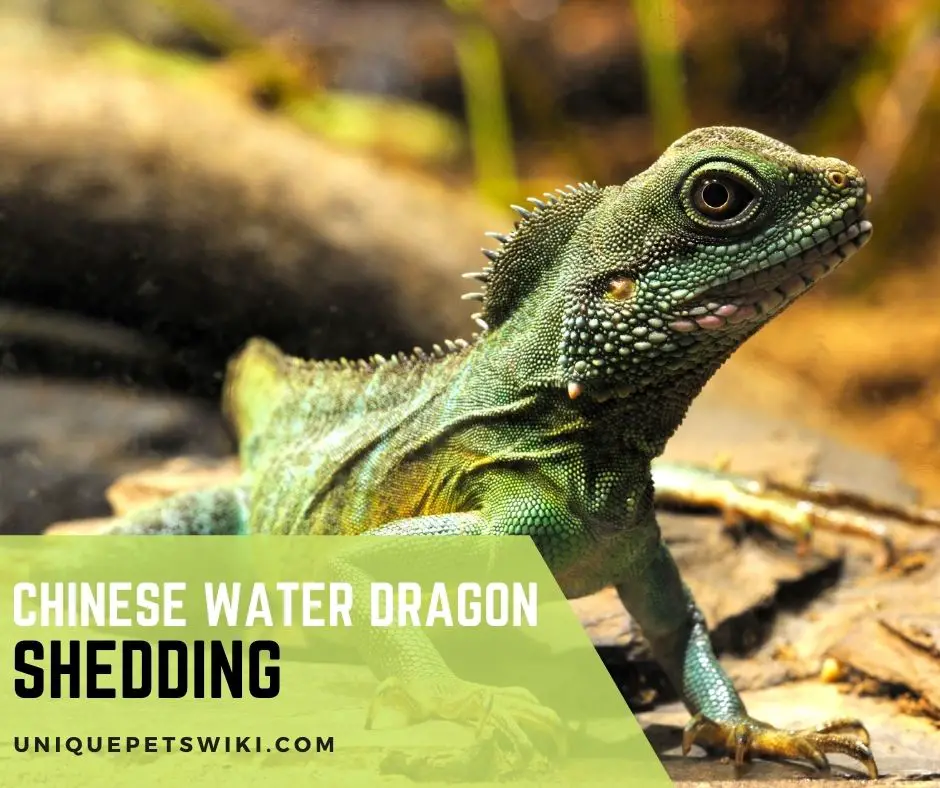Naturally, shedding occurs so the body could get rid of old skin and be able to replace it with a new one. Because they are growing, young Chinese water dragons shed more frequently.
In this article, you will learn everything you need to know about Chinese water dragon shedding, as well as how to help your pet dragon shed and how to deal with issues.
This article has been reviewed by Dr. Gospel. Read more about our knowledge control process here.
Contents
Chinese Water Dragon Shedding: Everything You Should Know
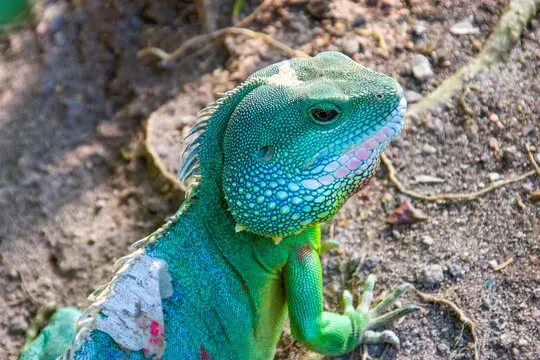
As the skin of Chinese water dragons begins to shed, you will notice a darkening of the area. Your pet Chinese water dragon may spend more time in the water soaking to remove the old skin.
Excessive force through ripping or peeling off loose skin should never be used to help your dragon. When old skin remains adhered to the toe or the end of the tail, blood flow to the area is constricted.
Signs That The Chinese Water Dragon Is Ready Shed
Your Chinese water dragon’s skin in patches will darken in color before it sheds. The skin becomes grayish after that, eventually reverting to a nearly normal hue.
Then, the Chinese water dragon is ready to shed. The first signs of shedding will be seen around the head, followed by the tail.
What Happens During Chinese Water Dragon Shedding?
Your Chinese water dragon may refuse to eat or consume less during the shedding time.
Most Chinese water dragons do not enjoy being held during their shedding process. They are also likely to be easily frightened from stress and discomfort.
How Long Does A Chinese Water Dragon Shed?
In Chinese water dragons, their shedding process lasts about one to two weeks in general.
For the first time, young Chinese water dragons shed four to seven weeks after hatching. They shed different portions of the body at different times.
Possible Risks When Chinese Water Dragon Shedding
The shedding process could be a stressful time for reptiles. It comes with possible risks and those include:
- Stuck skin around toes, crests, heads, and tail tips – can lead to bacterial development or blood supply shutoff, resulting in digit/tail tip/toe loss.
- shed that has been kept (layers)
- Skin that is not shedding
- Skin infection, either systemic or due to excessive humidity levels
How To Distinguish Between Shed And Sickness
While it is typical for a Chinese water dragon to eat less and get darker during shedding, keep an eye out for any warning signs. This will prevent your Chinese water dragon from becoming ill.
Take your dragon to the vet if you detect any dark patches, especially ones that are filled with fluid.
Check for blisters that usually form on the stomach and back. If you see any forming, treat them as soon as possible with antibiotic cream or diluted Betadine.
Consult a veterinarian to confirm if the infection is fungal or bacterial. To rule out a systemic illness, blood tests may be required.
Make sure you do not mix shedding symptoms with sickness, aside from skin infections.
Excessive drowsiness, lengthy lack of appetite, and sunken eyes are a few examples of what to look for if you suspect that your pet is sick.
What Happens If Chinese Water Dragon Not Shedding
When it comes time for their dragon to shed, most owners are apprehensive. There is no need to be concerned.
Shedding is only a natural process of growth and development that occurs in reptiles as they get older.
When compared to mature or adult dragons, this procedure occurs more frequently in baby water dragons and can take up to two weeks.
Normally, dragons start shedding from their front legs and head, then their upper body, and finally their bottom body.
While this is not a medical emergency, you can have your uromastyx examined by a veterinarian if there is no obvious reason why it is unable to shed properly.
Meanwhile, look for signs of external parasites like mites, as well as scars or skin sores that could explain why it hasn’t been shed.
3 Tips To Care Chinese Water Dragon Shedding
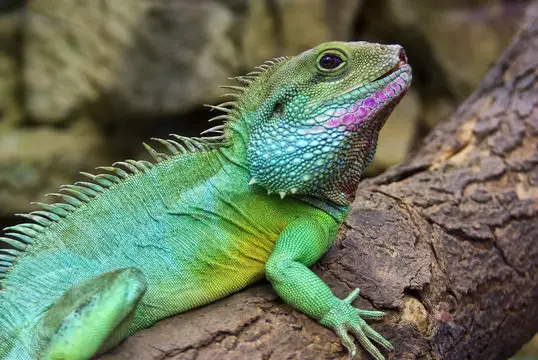
Shedding is a normal occurrence for Chinese water dragons. This is not something pet owners should be afraid of, however, the process can definitely pique your interest.
When water dragons are hatchlings, they shed more frequently and for a longer period because they are growing.
Shedding occurs when the body grows and gets rid of the old skin to make room for the new one.
Chinese water dragons shed once a month once they have reached adulthood. It may be more difficult to observe because their shedding is not particularly significant.
They also mistake the skin that they shed for food.
Here are tips on how you can provide care for your pet as it sheds.
Ensure And Maintain high humidity levels in the Tank
Chinese water dragons demand a high amount of humidity in their enclosure. The percentage for the humidity must be kept between the range of 75 and 80 percent during the day.
You can have the enclosure misted in the morning and afternoon.
Allow for a 60 percent humidity drop in the tank between mistings before spraying again. Humidity levels can rise to 90-100 percent during sprinkling.
Bacterial and fungal development thrive in excessive humidity. Chinese water dragons bask and dry a lot in nature, which avoids diseases.
Extremely high humidity levels will result in squishy conditions, which might lead to infection.
You can manually sprinkle the tank and your dragon one or two times a day to maintain appropriate humidity levels.
Also read: Complete Chinese Water Dragon Humidity Guide And Maintenance Tips
Ensure There Is A Soaking Tub In The Tank
At all times, a Chinese water dragon’s habitat must have a soaking tub or a swimming pool. Swimming and soaking are two activities that Chinese water dragons are fond of.
Hence, you will need a tub that you can fill with water. Soaking also aids in the shedding process.
The water in the soaking tub should be refreshed once every three to four days by using one or two filter/s. You will have to clean it every day if you do not have a filter.
Chinese water dragons poop in water as well, and you must expect them to poop a lot as they naturally do.
Make certain that the water in a bathing tub is sufficiently warm (80-85 degrees Fahrenheit, or 26-29 degrees Celsius, possibly a bit lower at night).
Otherwise, your dragon may develop muscle cramps and be unable to move. Subsequently, they could die from drowning in water.
REPTI ZOO Full Glass Reptile Terrarium
- 【Tempered Glass Tank 20 Gallon】Patented Design Reptile Tank Size: 24" x 18" x 12". Made of high quality tempered glass for sturdy and safe, this wide terrarium tank is suitable for normal reptile amphibian pets as lizard, crested gecko, frog, snake, tortoise and more.
- 【Top Screen Ventilation】Thin wire top screen provides ventilation and allows uvb and infrared penetration. Raised bottom frame can be fit a substrate heater; Waterproof bottom makes this 20 gallon tank can be used both as desert terrarium and rainforest tank.
- 【Front Opening Doors】Two front doors of this 20 gallon terrarium can open separately, easy to feed your pet and add decoration.
- 【Great Wire Organization】Prepared 6 inlet holes designed on top lid for wires and tubing. Extra cable pass for wire organization(up to 4 wires).
- 【360° Full View Glass Tank】This 4 sides of the 20 gallon reptile tank is made of full tempered glass, allows you to watch and interact with your pets easily.
Last update on 2022-12-29 / Affiliate links / Images from Amazon Product Advertising API
Don’t Pull The Skin To Help Chinese Water Dragon Shedding
Pulling your Chinese water dragon’s skin when it sheds might cause infection and open sores.
If loose substrate sticks to open wounds, or if they swim in the water they have previously pooped in, they can easily contract bacteria and become infected.
Check for any sticky skin around the head, toes, spikes, and tail tip after shedding has ended in two weeks. These are thorny issues.
The blood supply will be disrupted if skin becomes trapped around these locations. This will result in gangrene and permanent loss of digits, crests, tail tips, and other body parts.
If there is any remaining shed, moisten the areas and gently brush the skin off using a cotton bud/toothbrush. You can also apply a shedding aid spray.
Do not be alarmed if you have recently taken a Chinese water dragon home and noticed a lot of sticky sheds.
Start bathing the regions on a daily basis, and if the skin does not come off, use shed aid.
Skin that has become stuck can stack on top of itself and be difficult to remove. Continue soaking and spraying until the condition improves; poor skin can take up to a week to soften and shed.
How To Help Chinese Water Dragon Stuck Shed
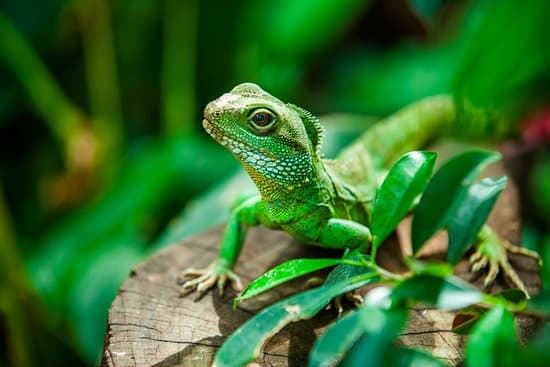
Are you concerned about a piece of skin stuck on your Chinese water dragon and unsure how to assist your pet?
A stuck piece of skin might become a serious problem. These are the things you can do to assist your pet in removing the stuck or retained skin.
Pulling the blocked shed off is not a good idea. You can help your Chinese water dragon remove the damaged skin, but do not rip off the unshed skin.
This can cause harm to the skin’s underlayer. Instead, immerse your pet dragon in a warm bath.
While it may be tempting to pull the trapped shed off, you will inflict pain and injury to your pet, as well as exacerbate the condition.
How To Treat Tissue Damaged By Retained Sheds
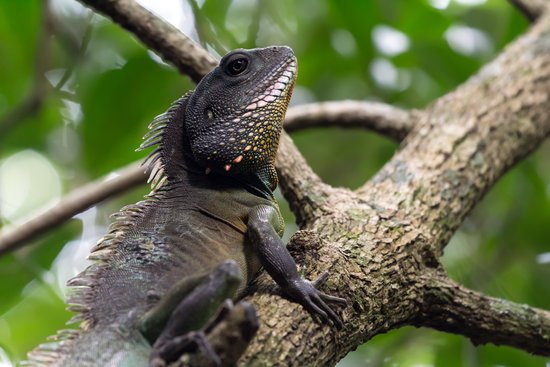
It is critical to ensure that all of the old skin falls off the Chinese water dragon during shedding time. The toes, tail, and back can be difficult to treat as they often retain old skin.
Dysecdysis or retained sheds are partly caused by a poor or inducing environment. This includes low humidity in the enclosure and the absence of proper bathing facilities.
However, it is often the result of a more deeply rooted issue such as systemic disease.
If your dragon is having difficulty shedding its skin, you should first ensure that the dragon’s environment is at optimal levels.
Ensure that the humidity level is between 60% and 80%. The most recommended humidity level is 80 percent.
If you are having trouble keeping the humidity levels in these ranges, mist your dragon twice a day each day.
If you are certain that the basic needs of your pet dragon are taken care of and suspect that other factors could be affecting the shedding, it is recommended that you take your dragon to a qualified reptile vet for a check-up as an underlying disorder could be the cause of persistent skin problems.
If you notice that your dragon’s old skin is not coming off easily or that there are a lot of retained old skin, soak your dragon thoroughly and gently to try removing the bothersome old skin.
You must proceed with caution because doing so may cause pain to the dragon as well as damage to the underlying skin if you try to force the removal of the skin.
If the area appears to have retained skin and has gotten difficult to remove, take your time by gradually loosening the skin over a period of days rather than attempting to remove it all in one day – slowly but surely, as the people say.
It is recommended that all of the old skin be removed. If not, the blood flow in the area will tighten and constrict, causing the body part to die.
Many dragons have been purchased only to discover that they lack toes or spikes due to poor sheds.
Oiibo 50 Gallon Reptile Terrarium
- 🐊【2 IN 1 Terrariums】This 50 gallon reptile terrarium coming with two different height front glass, high glass-7inch suitable for small animals such as hamsters, guinea pigs, etc, short glass-4inch suitable for reptile pets such as bearded dragon, lizard, snake, crested gecko etc.
- 🐍【360°Full View Glass Reptile Terrarium】Transparent glass helps you better observe the behavior and status of reptile and small animal pets.
- 🦎【Sliding Doors and Safe Lock】Easy to feed and clean daily by the front sliding door; Safety lock prevents the animals from escaping and safe in case.
- 🐉【Versatile top cover】Mesh top cover provides ventilation and allows the light penetration, provides more comfortable natural environment, Outlet holes on the lid allows thermometer wires pass through easily.
- 🦔【Multi-Function Reptile Tank 36 x 18 x 18】36” long tank is suitable for hamster, gerbils, mice, rats, turtle, snake, geckos, bearded dragon, insects, lizard, reptile pets and small animals. If you have any questions, please contact us in the first time.
Last update on 2022-12-29 / Affiliate links / Images from Amazon Product Advertising API
Conclusion
Normal shedding is an important part of the growth in all reptiles, including Chinese water dragons.
It simply depends on a number of factors, including the pet’s nutritional status, environmental conditions, and overall health.
Therefore, knowing how to attend to the needs of your pet dragon is highly critical, especially for its health and state.
Hope the information in this article helps you understand how to properly care for your pet during shedding.
